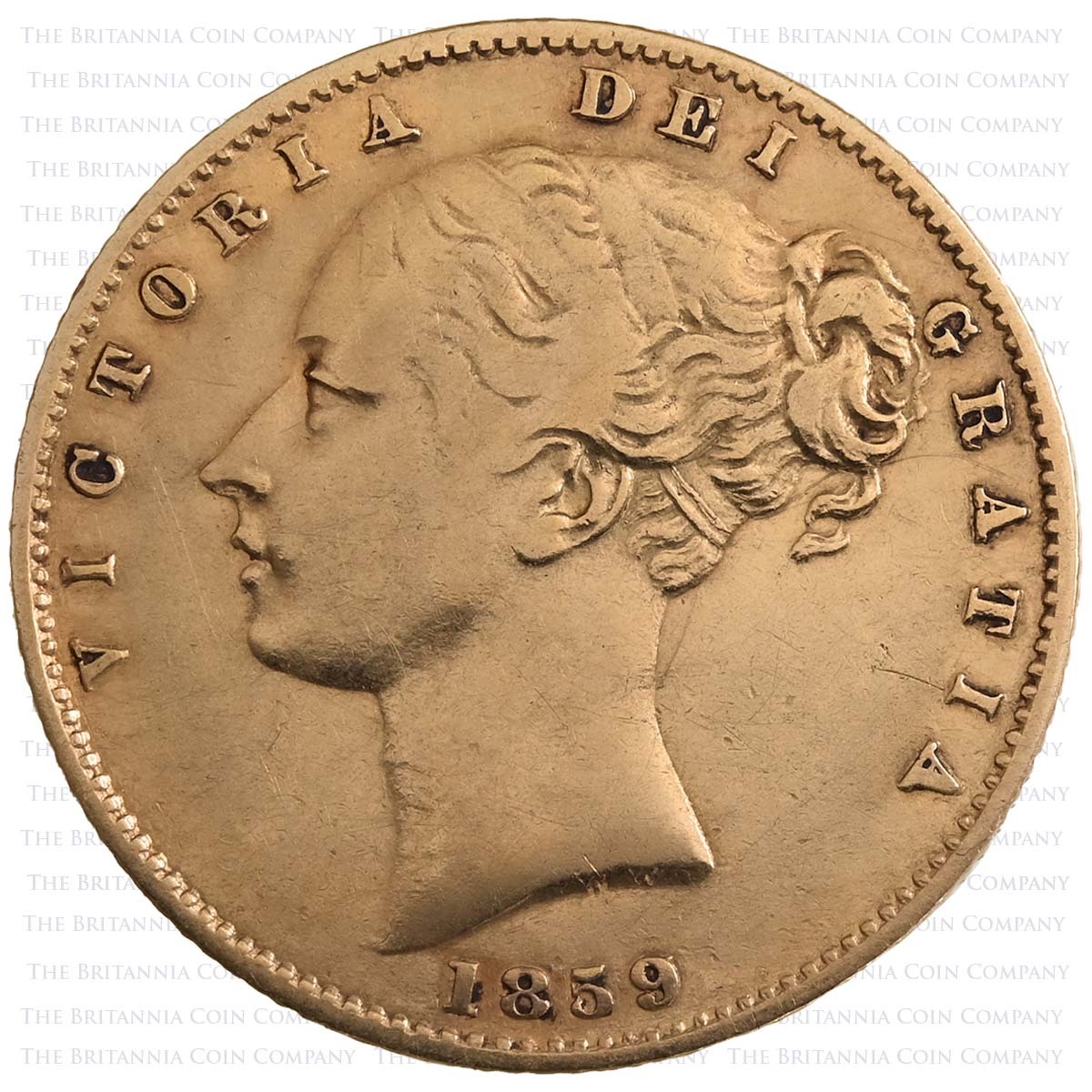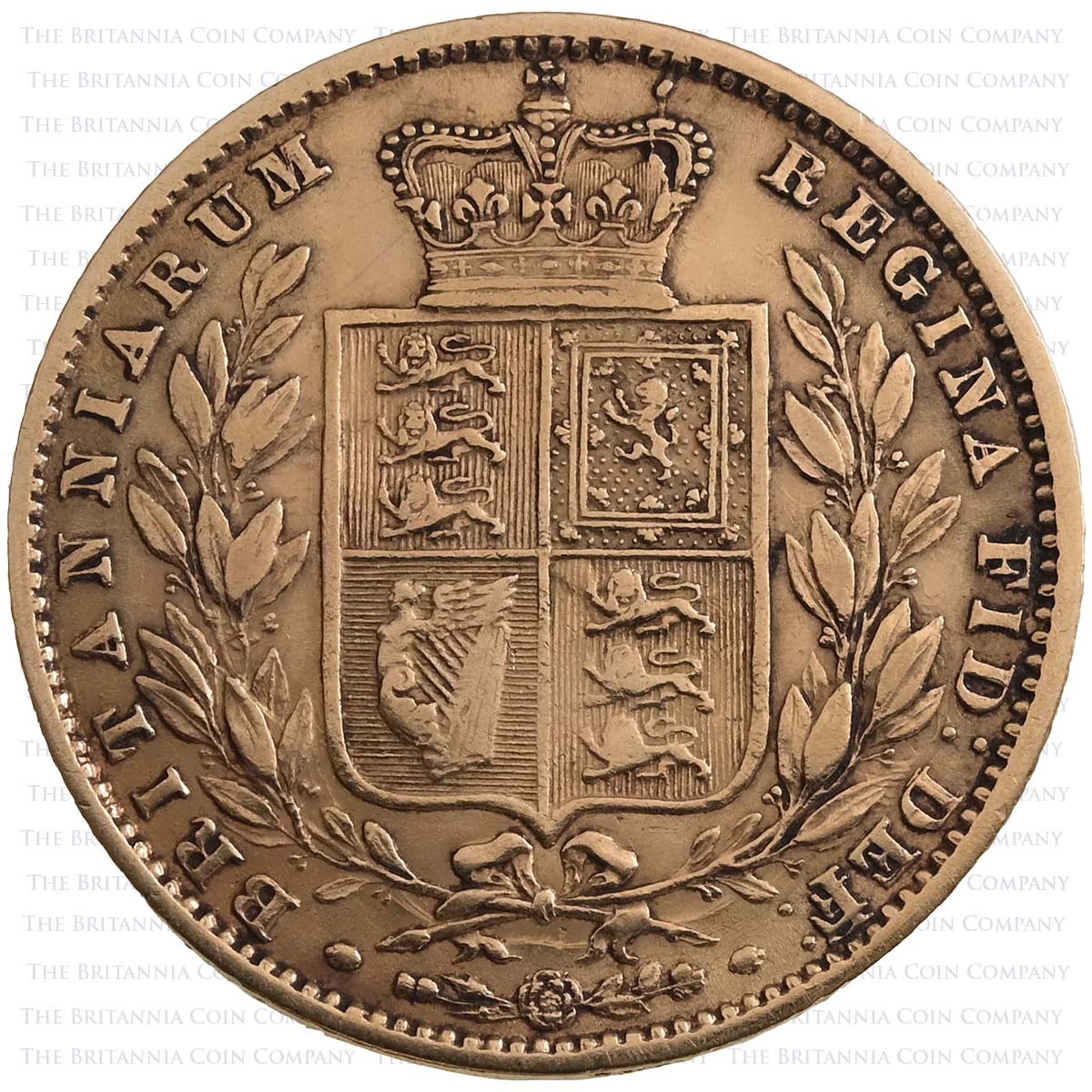1859 Ansell London Mint Gold Full Brittle Sovereign Queen Victoria Coin

* Images are of the actual product not stock images



Rare 1859 'Ansell' Sovereign or 'Brittle Sovereign' with double ribbon detail.
Who Was George Ansell?
George Frederick Ansell was born in Carlshalton in 1826. He initially studied medicine before pursuing a course at the Royal College of Chemistry, afterwards taking a job with the newly founded Royal School of Mines. He joined the Royal Mint in November 1856 on the recommendation of then Master of the Mint, Thomas Graham FRS.
Graham and Ansell were both trained scientists who contributed to significant improvements in the quality of the British gold coinage. Despite his successes, Ansell's strong opinions on how the Mint should be run would eventually cost him his job. After his 1867 dismissal, he published a book detailing the Mint's operations with a heavy emphasis on mismanagement and wasteful practices. It's been suggested that Ansell's criticisms influenced the 1870 Coinage Act.
Later in life, Ansell focussed on mining and the dangers of firedamp, a flammable gas (usually methane) that causes explosions in collieries. He later patented a firedamp indicator, making mining a little safer. He died in 1880 at the age of 54.
What Are 1859 Ansell Sovereigns?
In 1859 the Royal Mint received a shipment from the gold fields of New South Wales. When annealed in preparation for minting, the consignment was found to be too brittle for use. Further analysis revealed that the alloy contained lead, antimony and arsenic in improper quantities. Using this metal would have risked the Mint's international reputation for top-quality coinage.
George Ansell, then working in the Mint's Rolling Room was provided the opportunity to experiment with the dodgy gold. Applying his chemistry skills, Ansell successfully modified the alloys and was able to produce some 167,539 Sovereigns, reputed to be supremely tough and hard to damage, even with a set of pliers.
The Mint were so pleased with Ansell's work that they gave him a bonus of £100 (that's nearly £10,000 in today's money!).
Read more on our blog: 1859 Ansell Sovereigns: Rare Victorian Gold Coins.
Identifying The Ansell Ribbon Variation
Ansell Sovereigns can be distinguished from standard 1859 Sovereigns by a double ribbon detail, seen just behind Queen Victoria's ear in the profile portrait by William Wyon that features on their obverse.
Close examination shows Victoria's hair ribbon to have an extra line on Ansell Sovereigns that is not present on other Young Head Sovereigns. That's why you'll sometimes hear these coins referred to as the 'Ansell-Ribbon' variation.
Otherwise these 1859 coins are visually identical in appearance to others issued in the same year. The date appears below the effigy with the legend 'VICTORIA DEI GRATIA' around. The reverse shows Jean Baptiste Merlen's crowned, quartered shield of arms design with oak and laurel leaves and the words 'BRITANNIARUM REGINA FID: DEF:'. This type of Sovereign is known as a 'Shield Back'.
Rare 1859 Gold Ansell Sovereigns
Ansell's 1859 Sovereigns did circulate, the ribbon detail likely acting as an identifier to see how they would wear.
While thousands of Ansell Sovereigns were struck very few survive today: reportedly just 11-20 examples.
Marsh rates Ansell Sovereigns R4, indicating that they're among the rarest known gold Sovereigns. They remain sought after by collectors with high-grade coins selling for £10,000 plus at auction.
Historic Victorian Gold Sovereigns
The first modern gold Sovereigns were struck late in the reign of King George III. They took their name from a historic Tudor hammered coin and maintained their prestigious reputation. Sovereigns have been struck by the UK's national mint for the last two centuries, including through the long reign of Queen Victoria, who sat on the throne from 1837 until 1901.
The first Victorian Sovereigns featured William Wyon's 'Young Head' portrait of the Queen on their obverse. This effigy remained in use for decades with only minor modifications, long after it had become inaccurate. 1887 - Victoria's Golden Jubilee year - a new portrait by Sir Joseph Edgar Boehm was introduced. In 1893 this was replaced with the 'Old Head' or 'Veiled Head' by Sir Thomas Brock, used until the Queen's passing.
Until the 1850s, Sovereigns were only produced in London but gold rushes in the farthest reaches of the British Empire prompted the opening of branch mints in Australia, Canada, South Africa and India, extending the global reputation of these gold coins around the globe.
Today, Victorian gold Sovereigns enjoy a thriving collectors market with rare variants like the 1859 Ansell Sovereign the subject of particular interest.
Sell A 1859 Ansell Sovereign
Have you got a rare Ansell Sovereign you are looking to sell? The Britannia Coin Company are always looking to buy rare gold coins like these 1959 Sovereigns. Call us for a fast quote over the phone or use our Sell Your Coins page and we'll email you back ASAP.
Frequently Asked Questions
Marsh rates Ansell Sovereigns R4, indicating just 11-20 examples likely survive. These scarce coins can be identified by the double ribbon behind the ear on the portrait of Queen Victoria.
Genuine Ansell Sovereigns are made of 22-carat gold and weigh 7.98 grams. These rare coins are reputedly very tough and hard to break but we would not recommend damaging them!
Reportedly some 167,539 Sovereigns were produced by the Royal Mint with the so-called 'Ansell-Ribbon' variation. Very few of these have survived, perhaps less than 20.
Ansell Sovereigns conform to the fineness required for all British gold Sovereigns: they're made from 916.7 (22-carat) gold. They're the result of a metallurgical experiment by George Ansell.
Ansell Sovereigns or 'Brittle Sovereigns' can be identified by the extra line on the ribbon behind Queen Victoria's ear on the obverse. Standard 1859 Sovereigns have a plain hair band.
There were about 1.5 million 'normal' Sovereigns and 167,539 Ansell Sovereigns struck by the Royal Mint in 1859 though many fewer of these sought-after coins still survive today.
Reviews
We are always proud to show off our previous customers experiences with you and what they thought of our purchasing through with Britannia Coins.

